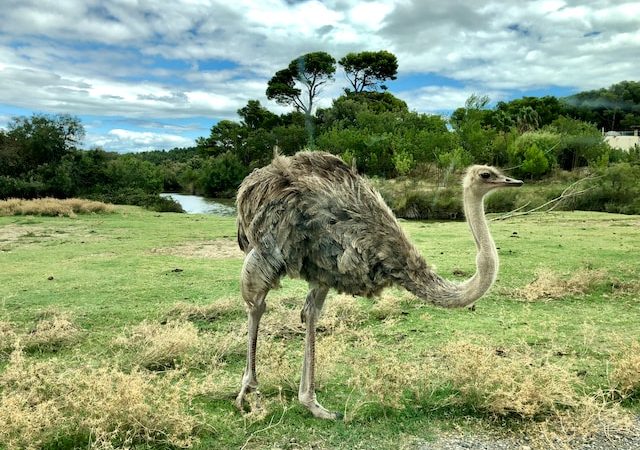Ostriches, known for their striking appearance and unique characteristics, are not only fascinating creatures but also play a significant role in promoting sustainable agriculture and conservation efforts. With their remarkable adaptability and numerous benefits, ostriches have emerged as key contributors to a greener future. In this article, we explore the role of ostriches in sustainable
Ostriches, known for their striking appearance and unique characteristics, are not only fascinating creatures but also play a significant role in promoting sustainable agriculture and conservation efforts. With their remarkable adaptability and numerous benefits, ostriches have emerged as key contributors to a greener future. In this article, we explore the role of ostriches in sustainable agriculture and conservation, highlighting their positive impact on the environment and communities.
[Body]
- Sustainable Land Use:
Ostrich farming promotes sustainable land use practices. These birds are well-suited to arid and semi-arid regions, thriving in environments where traditional livestock may struggle. By utilizing marginal lands that are unsuitable for other forms of agriculture, ostrich farming minimizes the conversion of valuable ecosystems, such as forests or wetlands. This sustainable land use approach helps preserve biodiversity and maintains the ecological balance of the region.
- Efficient Resource Utilization:
Ostriches are highly efficient in resource utilization, making them environmentally friendly livestock. Compared to traditional livestock, ostriches have a lower carbon footprint due to their lower water and feed requirements. They have adapted to survive in regions with limited water availability and can consume a diet comprising mainly of vegetation. This efficient use of resources reduces strain on the environment and contributes to sustainable agricultural practices.
- Natural Pest Control:
Ostriches offer a natural solution for pest control in agricultural landscapes. These birds have an innate ability to consume insects and small rodents, playing a crucial role in managing pest populations. By integrating ostriches into farming systems, farmers can reduce the use of chemical pesticides, promoting ecological balance and reducing the negative impacts on the environment and human health.
- Nutrient Recycling:
Ostriches contribute to nutrient recycling, enhancing soil fertility in agricultural systems. Their manure, rich in organic matter and essential nutrients, can be used as a natural fertilizer. When properly managed, ostrich manure replenishes the soil, improving its structure and nutrient content. This reduces the reliance on synthetic fertilizers, minimizing the environmental pollution associated with their production and use.
- Conservation of Genetic Diversity:
Ostrich farming also plays a role in the conservation of genetic diversity within the species. By selectively breeding ostriches, farmers can maintain and preserve genetic traits that are valuable for the long-term survival of the species. This captive breeding approach ensures the conservation of unique genetic lineages, reduces the risk of genetic erosion, and contributes to the overall conservation efforts for ostriches.
- Socioeconomic Impact:
The role of ostriches extends beyond environmental benefits. Ostrich farming provides economic opportunities and contributes to the socio-economic well-being of local communities. It generates employment, particularly in rural areas, and stimulates local economies through the sale of ostrich products. Additionally, ostrich farming can serve as a sustainable alternative for communities dependent on traditional agriculture that may be facing challenges due to climate change or limited resources.
[Conclusion]
Ostriches have emerged as valuable allies in the pursuit of sustainable agriculture and conservation. Their unique characteristics and adaptability make them excellent contributors to environmental preservation, resource efficiency, pest control, nutrient recycling, genetic diversity conservation, and socioeconomic development. By harnessing the potential of ostriches, we can promote a greener future, where agriculture and conservation go hand in hand, creating a harmonious balance between human needs and the well-being of our planet.

















Leave a Comment
Your email address will not be published. Required fields are marked with *